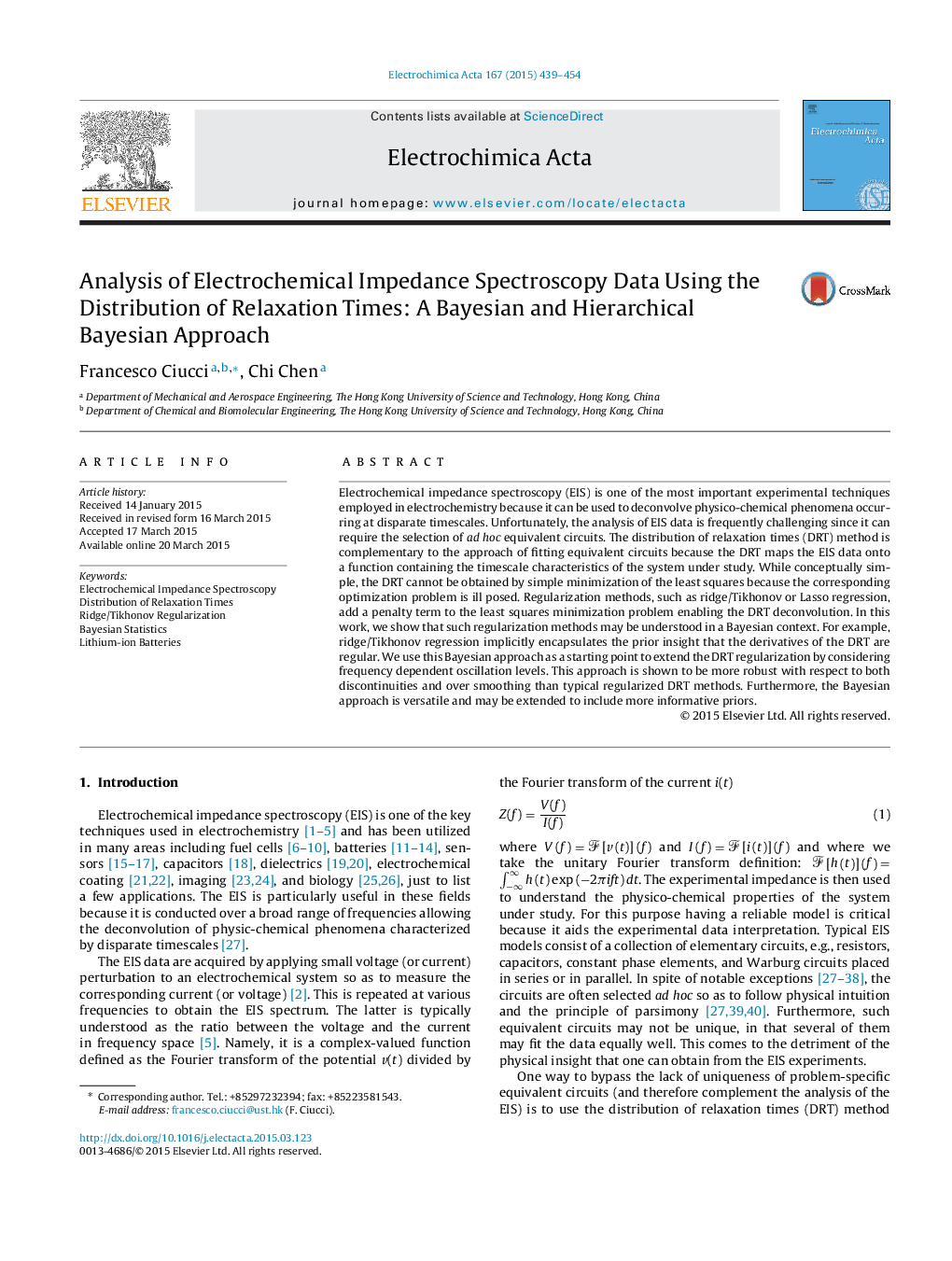| Article ID | Journal | Published Year | Pages | File Type |
|---|---|---|---|---|
| 184372 | Electrochimica Acta | 2015 | 16 Pages |
Electrochemical impedance spectroscopy (EIS) is one of the most important experimental techniques employed in electrochemistry because it can be used to deconvolve physico-chemical phenomena occurring at disparate timescales. Unfortunately, the analysis of EIS data is frequently challenging since it can require the selection of ad hoc equivalent circuits. The distribution of relaxation times (DRT) method is complementary to the approach of fitting equivalent circuits because the DRT maps the EIS data onto a function containing the timescale characteristics of the system under study. While conceptually simple, the DRT cannot be obtained by simple minimization of the least squares because the corresponding optimization problem is ill posed. Regularization methods, such as ridge/Tikhonov or Lasso regression, add a penalty term to the least squares minimization problem enabling the DRT deconvolution. In this work, we show that such regularization methods may be understood in a Bayesian context. For example, ridge/Tikhonov regression implicitly encapsulates the prior insight that the derivatives of the DRT are regular. We use this Bayesian approach as a starting point to extend the DRT regularization by considering frequency dependent oscillation levels. This approach is shown to be more robust with respect to both discontinuities and over smoothing than typical regularized DRT methods. Furthermore, the Bayesian approach is versatile and may be extended to include more informative priors.
Graphical abstractFigure optionsDownload full-size imageDownload as PowerPoint slide
